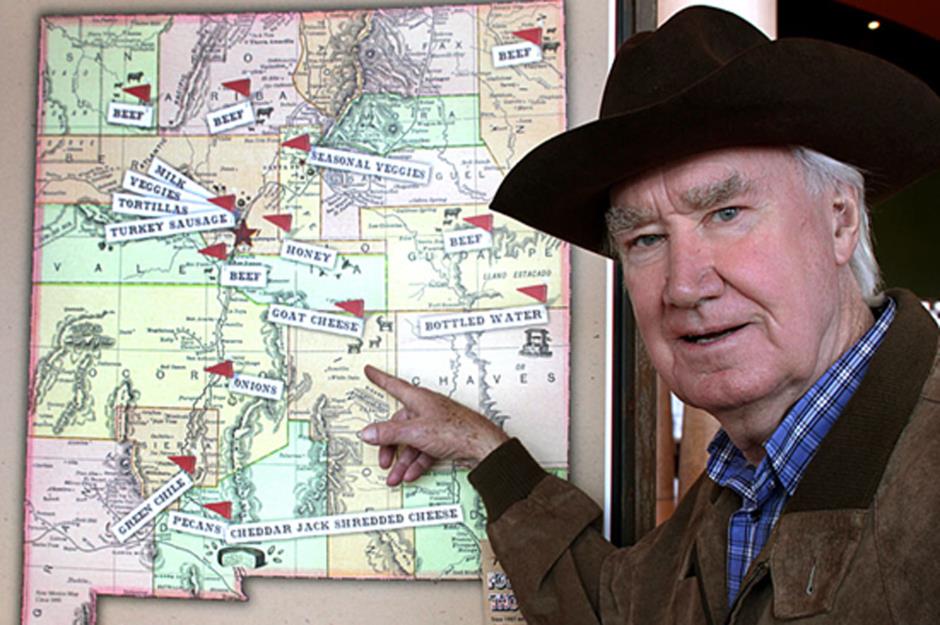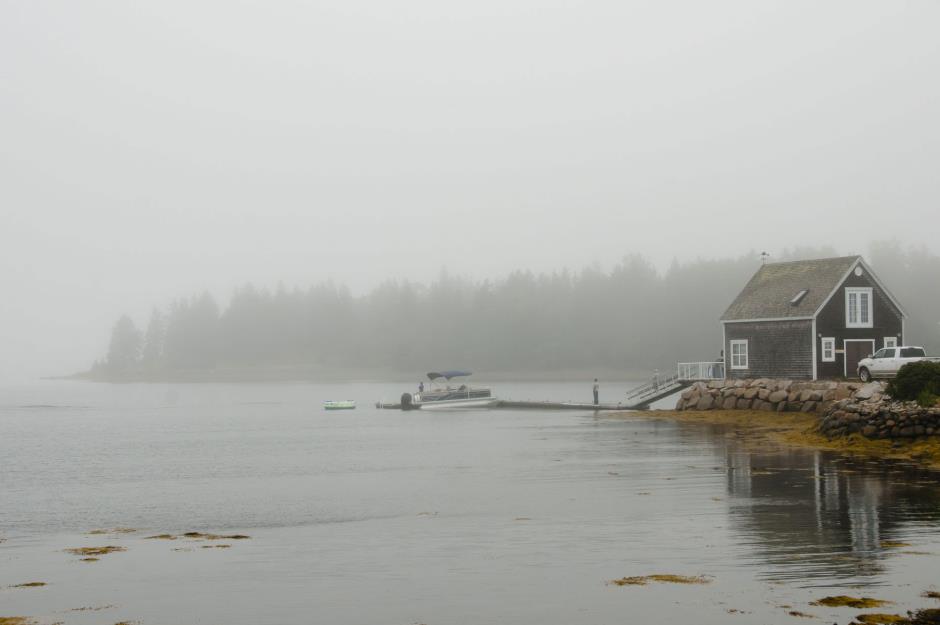From Forrest Fenn to Tutankhamun: deadly treasure hunts that captured the world

Courtesy Forrest Fenn
The ill-fated escapades that have claimed the most lives
Eccentric art dealer-turned-author Forrest Fenn's $1 million (£788k) treasure chest has been found after a hunt spanning 10 years, during which at least four people are believed to have died while searching for it. We take a look at this infamous case and five other treasure hunts that have claimed victim after victim. Click or scroll through to read the full stories.

Adwo/Shutterstock
Oak Island Money Pit
Oak Island in Nova Scotia, Canada has been the site of a number of deadly treasure hunts since the 1700s. A deathbed confession from a pirate in the late 18th century is thought to be the source of the legend. Early settlers believed the pirate had buried treasure in a sinkhole on the island called the Money Pit.
Vasilyev Alexandr/Shutterstock
Oak Island Money Pit
In 1799, a settler called Daniel McGinnis carried out the first dig. He found a series of mysterious symbols, which when deciphered read “Forty feet below, two million pounds lie buried”. Before he could dig deeper, the possibly booby-trapped hole filled with water and the dig was called off.
Oak Island Money Pit
Several unfruitful digs were undertaken in the 19th century. The first death was recorded in the 1860s, when a member of an excavating team was killed when a pump boiler exploded. Another death followed but the most tragic incident occurred on 17 August 1965.
Courtesy Oak Island Treasure PD
Oak Island Money Pit
On that fateful day, digger Robert Restall, his 18-year-old son Robert Jr., business partner Karl Graeser and employee Cyril Hiltz were overcome by carbon monoxide fumes from a faulty gasoline engine and died in an excavation shaft on the island.
Oak Island Money Pit
Spookily enough, an oft-quoted prophesy states that seven people must die before the treasure of Oak Island is found. Given six people have lost their lives searching for the treasure, it could be a case of six down, one to go...
Lake Toplitz Nazi treasure
Lake Toplitz in Austria was used as Nazi naval testing station during the Second World War. It is believed a hoard of looted gold and other treasures contained in metal boxes were dumped in the Alpine lake towards the end of the conflict, along with £100 million in counterfeit Sterling banknotes.
Courtesy Silkborg Bunker Museum
Lake Toplitz Nazi treasure
Once the war was over, the search for the lake's hidden treasures began. An American navy diver drowned in 1947, the first to perish looking for the boxes. In 1957, a salvage team from Germany uncovered a massive stash of forged banknotes and a printing press, but no gold or precious treasures.
Walter Quirtmair/Shutterstock
Lake Toplitz Nazi treasure
By the early 1960s, the lake had become a magnet for treasure hunters, who risked their lives to find the treasure. A health and safety nightmare, the death of another diver in 1963 prompted the Austrian government to severely restrict further explorations.
Lake Toplitz Nazi treasure
A total of a seven divers have drowned searching for the treasure. Needless to say, given the shocking body count, the Austrian authorities have permitted only a handful of heavily-regulated explorations since the 1960s, and the last major search in 2006 found nothing of value.
Lake Toplitz Nazi treasure
Tantalizingly, in 2014 the nephew of Ernst Kaltenbrunner (pictured), the Nazi general who supposedly oversaw the dumping of the boxes, confirmed that they actually do contain gold and other treasures. Lurking somewhere in the lake, they are still waiting to be discovered.
PD-1923 Ashley Van Haeften Flickr CC
Cahuenga Pass treasure
As legend has it, this fabled treasure is buried somewhere along the Cahuenga Pass in Los Angeles. In 1864, four agents working for Mexican President Benito Juarez left Mexico City and set out for San Francisco with a treasure trove of gold, diamonds, pearls and other valuables that they were planning to exchange for weapons.
PD-1923 TravelingMan Flickr CC
Cahuenga Pass treasure
One of the agents died en route to San Francisco, the first death associated with the treasure. Worried the treasure would be confiscated by the authorities, the surviving trio buried it and fled. Little did they know, a fugitive shepherd named Diego Moreno had been watching. Seizing the moment, Moreno dug up the stash and fled.
PD-1923 Ashley Van Haeften Flickr CC
Cahuenga Pass treasure
When the agents returned for their loot and discovered the theft, they pointed the finger at one another. Two of the agents ended up killing each other and the third died in a bar fight not long after. Diego Moreno was just as unlucky. He buried the treasure on the Cahuenga Pass for safekeeping but died before he could retrieve it.
PD-1923 Ashley Van Haeften Flickr CC
Cahuenga Pass treasure
Just before he died, Moreno revealed the location of the buried treasure to his friend Jesus Martinez, who teamed up with his stepson to find the stash. However, Martinez died suddenly while digging for the treasure, and his nephew was murdered several years later.
Cahuenga Pass treasure
In 1885, a Basque shepherd discovered part of the treasure and boarded a ship to return to Spain, only to fall overboard and drown. The final death associated with the treasure occurred in 1939. Distraught his search was unsuccessful, prospector Henry Jones died by suicide several months after the dig.
Now discover the priceless treasures found in people's homes
PD-1923 New York Times Wikimedia Commons
Tutankhamun's tomb
An astonishing 11 deaths have been attributed to the so-called Curse of Tutankhamun. On 29 November 1922, archaeologist Howard Carter and his team discovered the enigmatic pharaoh's spectacular tomb in Egypt's Valley of the Kings.
PD-1923 Henry Burton Wikimedia Commons
Tutankhamun's tomb
Several months after the opening of the tomb, Lord Carnarvon, the financial backer of the expedition who was with Howard Carter when he discovered the sarcophagus, died as a result of an infected mosquito bite, the first of the 11 deaths associated with the curse.
PD-1923 Library of Congress
Tutankhamun's tomb
In May 1923, American financier George Jay Gould (pictured) succumbed to a fever he contracted while visiting the tomb and perished. Two months later, Egyptian Prince Ali Kamel Fahmy Bey was shot dead by his wife, following two visits to the tomb.
Tutankhamun's tomb
Upping the body count, the doctor who X-rayed the famous mummy died in January 1924 from a mysterious illness, and another tomb visitor was murdered later that year in Cairo. In 1928, Arthur Cruttenden Mace (pictured), a member of the original excavating team, died from arsenic poisoning.
Tutankhamun's tomb
The untimely deaths of four close relatives and associates of Lord Carnarvon have also been put down to the curse, not to mention the death of Howard Carter in 1939. Be that as it may, research shows that most of 58 people who were present at the opening of a tomb actually lived to a ripe old age.
Ray Harlan & Sonny PD-1923
Lost Dutchman's gold mine
A staggering 500+ adventurers are said to have died searching for this mythical lost mine, which is thought to be located somewhere in the Superstition Mountains in Arizona. It is named after 19th-century immigrant Jacob Waltz, who allegedly discovered the mine but refused to reveal its exact whereabouts.
Now read about the most valuable substances on Earth
Lost Dutchman's gold mine
In June 1931, amateur explorer Adolph Ruth vanished searching for the mine. His skull was discovered the following December with two bullet holes. Strangely, the death was treated as unsuspicious by the local authorities despite the concerns of Ruth's family, who were convinced he was murdered for his treasure map.
Lost Dutchman's gold mine
The second most notable adventurer to die looking for the mine, prospector James A. Cravey went missing in the Superstition Mountains and his headless remains were discovered in the mid-1940s. During the latter half of the 20th century, hundreds of explorers reportedly lost their lives searching for the mine.
Lost Dutchman's gold mine
The Lost Dutchman's Gold Mine hit the headlines in 2009 when Denver native Jesse Capen, 35, disappeared in Arizona's Tonto National Forest, during a search for the mine. In 2012, the treasure hunter's remains were discovered in a crevasse; a fall was the likely cause of death.
Courtesy Maricopa County Sheriff's Office
Lost Dutchman's gold mine
Six months after Jesse Capen vanished, three Utah hikers: Malcolm Meeks, 41; Curtis Merworth, who was 49; and Ardean Charles, 62 (pictured) got lost looking for the mine and perished in the desert heat, presumably from dehydration and exposure. Their remains were found in January 2011, adding to the already massive death toll.
Courtesy Old Sante Fe Trading Co.
Forrest Fenn's treasure
The Forrest Fenn treasure hunt story starts in 1988 when the New Mexico-based art dealer was diagnosed with kidney cancer. Fearing his days were numbered, Fenn hatched a plan to bury a chest packed with $1 million (£788k)-worth of gold, gemstones and jewellery in an undisclosed remote location in the west of the USA and take his own life.
Forrest Fenn's treasure
But Fenn had a miraculous recovery, and change of heart. After sitting on the treasure for years, he finally decided to bury it in 2010 and create a treasure hunt. That same year, Fenn presented nine clues in the form of a poem as well as a map to the treasure in his autobiography, and went on to capture the public imagination when he appeared on NBC's Today Show in 2013.
Forrest Fenn's treasure
As publicity surrounding the treasure reached fever pitch, fortune hunters began to risk life and limb searching for the 40-pound chest. The first death occurred in January 2016 when Randy Bilyeu (pictured), a 54-year-old treasure hunter from Colorado, went missing in the New Mexico wilderness. His body wasn't discovered until the following July.
Courtesy Connection Church via YouTube
Forrest Fenn's treasure
In 2017, the treasure claimed a second life. The body of another Coloradan fortune hunter, Pastor Paris Wallace, 52, of Grand Junction was discovered on the banks of the Rio Grande River in New Mexico in June. He had been missing since January.
Forrest Fenn's treasure
In January 2018 it was confirmed that a body found in the Arkansas River (picutred) was that of 31-year-old Eric Ashby, who had disappeared the previous June after the raft he was travelling in with some friends reportedly capsized on the river. Ashby had moved to Colorado Springs in 2016 to pursue the treasure, his sister told ABC News.
Forrest Fenn's treasure
It's been confirmed that this treasure hunt has claimed a fourth victim. Jeff Murphy, 43, of Illinois, died from a fall in Yellowstone National Park in June 2017 and the news was made public following a freedom of information request by TV station KULR-TV. Forrest Fenn has reportedly said that Murphy was looking in the wrong place and had offered to pay for a helicopter to aid rescuers in looking for him.
Forrest Fenn's treasure
Despite being urged by the police to pull the plug on the treasure hunt, Forrest Fenn refused to call it a day. On Sunday 7 June, 10 years after the treasure was hidden, Fenn told the Santa Fe New Mexican that the $1 million (£788k) bounty had been found by an unnamed man. Fenn said that he had received a photograph from the man to prove that it had been found, although he did not reveal the exact hiding place. Commenting on the news, he said: “I don’t know, I feel halfway kind of glad, halfway kind of sad because the chase is over."
Now read about the amazing treasures people didn't know they owned

